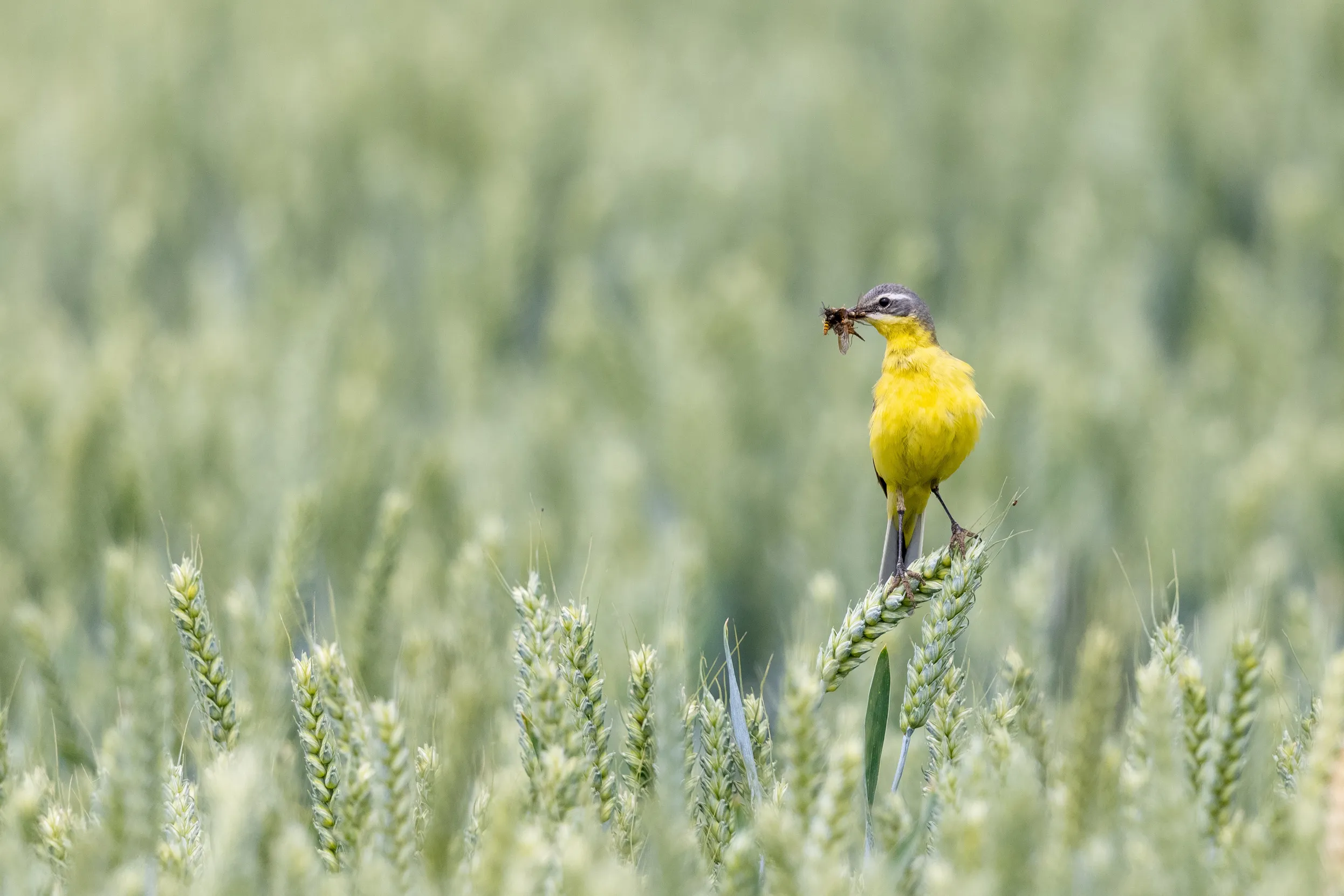
Yellow wagtail conservation - Advice for farmers
The yellow wagtail is a summer visitor, arriving in April and leaving in September to winter in sub-Saharan Africa.

On this page
Yellow wagtail in brief
The subspecies found in the UK is virtually endemic to the British Isles. The population has declined
by 72% since 1967.
Research into ways in which farmland management can improve the status of the yellow wagtail is
ongoing, but the following management advice should help yellow wagtails on your farm, as well as
other farmland wildlife.
Yellow wagtails produce two broods per year where suitable habitat exists. They nest on the ground,
usually in large fields, well away from tall boundaries. They also nest in wet grassland and hay
meadows.
Key points
- Increase the range of crops in your rotation, to boost both feeding and nesting opportunities.
- The yellow wagtail is a summer visitor, arriving in April and leaving in September to winter in sub-Saharan Africa.
- Enhance winter cereals on arable farms by including skylark plots.
- Maintain areas of unimproved grassland or manage grassland with low-inputs to boost insect food.
What this species needs
Nesting habitat
Yellow wagtails need an open sward for nesting. They breed on the fringes of wetlands, wet
grassland, salt marshes, hay meadows and in some vegetable crops and a number of arable crops,
including cereals, potatoes, peas and field beans. Vegetation must be open enough to give the birds
easy access to the ground.
Summer food
Yellow wagtails need a good supply of insects and spiders throughout the summer, particularly flying
insects in sparse vegetation and open ground. Grazed pasture is a favourite foraging habitat for them,
as are in-field manure heaps, ponds and wet areas.

How to help
The following guidelines should be targeted within 2km of areas where nesting yellow wagtails still
occur. Such management is unlikely to be successful at attracting yellow wagtails if they are not
already in the vicinity, although some of these guidelines may benefit other wildlife in these areas.
Wet features
- restoration or maintenance of wet features such as open wet ditches, ponds and scrapes will boost a number of flying insect groups on which yellow wagtails feed on all types of farmland.
- For the greatest benefit to yellow wagtails, these wet areas should be open and free from shading by hedges and trees.
On arable land
- A wide crop diversity will generally provide more nesting and foraging opportunities for yellow wagtails throughout the breeding season. Winter wheat is commonly used throughout the breeding season, but where available, birds will often relocate to peas and potatoes for later broods.
- Skylark plots within winter cereals can provide foraging habitat in arable areas dominated by autumn-sown crops.
- Creation of a network of insect-rich habitats around arable farmland will provide plenty of food – agri-environment measures such as flower-rich or cultivated margins, beetle banks and low-input crops are ideal.
- Try to avoid using broad-spectrum insecticides after 15 March.
On grassland
- Maintain water levels and extensive grazing to provide some nesting cover on wet grasslands and grazing marsh.
- Low-input, cattle-grazed pasture is likely to provide good all-round habitat for yellow wagtails.
- Maintain areas of unimproved grassland with low inputs to boost insect numbers and provide highquality feeding habitat.
- Delaying cutting of silage and hay crops used by nesting yellow wagtails until after 15 July will allow most first broods to successfully fledge prior to management.